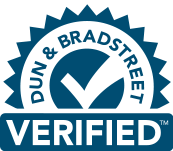Rapid prototyping is an iterative method used by the engineers to visualize an idea of a product in order to receive feedback and validation from clients, stakeholders, developers, designers, and related users. A prototype can vary from a rough paper sketch to the interactive simulation that looks, feels, and function as the final product. Rapid prototyping services help engineers and developers to experiment with multiple opportunities, ideas, and approaches to facilitate a better version of the product. However, it isn’t that easy as it sounds. There are several dos and don’ts one should keep in mind before making the best use of rapid prototyping services.
Here are viable dos and don’ts to keep in mind for implementing a successful rapid prototyping approach:
Do:
- Work in Coordination: Work together in sync with the fellow engineers/developers, business and IT stakeholders while developing a prototype. This will not only help in receiving valuable feedback but also keep every important person vis-à-vis the product in the loop.
- Clear Concepts: Shun “prototype creep” by setting expectations and short term goals for the process while clearing out its purpose, fidelity, scope and duration. Remember, rapid prototyping technology is a means to an end, not an end in itself.
- Keep Transparency: During the development of interactive high-fidelity prototypes and simulations, keep transparency with the clients about the realistic delays.
- Reuse, Reuse, Reuse: The main idea behind the inception of rapid prototyping was to save a significant amount of time and resources. Therefore, keep that legacy alive by saving reusable templates, patterns, stencils, and widgets for future projects.
- Create Small Tasks: Break big tasks into small ones and assign them to fellow engineers as per their expertise and set priorities. This will help in setting timelines keeping the work on track.
- Prototype Documentation: Keep a track of every small detail including its blockers, loopholes or other important facets when developing a prototype. It will be of utter use during building the actual product.
- Don’t:
- It’s not the Final Product: As aforementioned rapid prototyping service is a means to an end, not an end in itself.
- Do not make it complex: Restrain yourself from adding complexity and geometrically difficult features when building a prototype as it will make actual product development process difficult.
- Do not Over Spend: In order to make the best, do not spend many resources for equipping highly advanced technology unless it is a must.
- Understand when to Stop: In order to attain perfectionism, do not get trapped in the vicious circle of prototype development. Be mindful of when to take a pause.
- Don’t Lose Sight of your Idea: In order to add exciting features, do not create a replica of something which wasn’t your idea all along. Stay focused and build the prototype around your USP.
Google Ventures design partner Daniel Burka says, ‘A prototype is not designed to be a fully functional version of a system, but is only meant to help visualize the user experience of the final product.’ Whoever understands all these aforementioned pitfalls and understands the design thinking process can achieve a successful prototype development.
 +91-120-4736400
+91-120-4736400 info@sphinxworldbiz.com
info@sphinxworldbiz.com


















